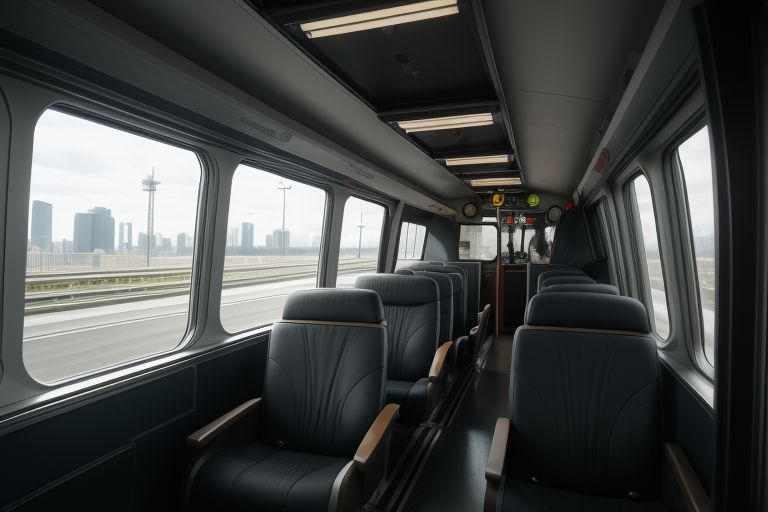Getting to and from work or school every day can eat a huge chunk of your budget without even realizing it. Thankfully, there are several simple money saving techniques you might have overlooked while driving to work every day. Whether that means seeking out less expensive modes of transportation or adopting strategies to cut costs, there are actions you can take to lower your commuting costs while still maintaining a solid experience. Let’s check out some ways through which you can save some money on your journey in this article.
The High Cost of Commuting
To most, it’s just an inescapable fact of their working life. The costs mount up whether you drive, bike or take public transportation. Commuters on average pay hundreds of dollars — maybe more – a year just to get to work. Gas, public transit fares, car maintenance and even parking costs. Commuting costs a lot of money but it doesn’t have to be an expensive affair. A couple of tweaks to your normal day and you could be saving big in little to no time.
Luckily, reducing your commute expenses is simpler than you might imagine. Regardless of if you want to tweak your current travel lifestyle or start all over, there is something for everyone. So without further ado, here are some simple tips to keep your daily commute costs in check.

Go for Cheaper Transportation Modes
Arguably, the best way to slash your commute expense is by choosing one or more of several alternatives for getting from point A to point B: Different modes involve different costs out of pocket, and the differences can be immense.
Carpooling or Ride-Sharing
This can help you save on fuel expenses and reduce your vehicle usage if you are able to carpool with your coworkers or neighbors. Splitting the cost of gas means less expenditure On top of that, you get to drive fewer miles, so your car will need maintenance (and pay more) less often. Furthermore, many cities have carpool lanes that can reduce the amount of time spent in traffic, which is beneficial for you and your wallet.
If you are with friends or colleagues, you can also use apps like Uber and Lyft to split the cost. For many people, it can be more affordable to carpool than ride alone — particularly if you could get rides during less expensive off-peak times.
Public Transportation
Usually, using public transportation to get to work is one of the cheapest options, especially in urban areas where parking costs can go through the roof. In a location where you can take buses, subways, trams, or trains that issue monthly passes at a reduced price. You can also save quite a bit by buying the monthly pass rather than paying as you go. Most employers will pay for public transportation and also offer commuter benefits that allow you to put pre-tax dollars aside to offset (reduce) your commuting costs as well.
Reloadable transit cards are cheaper per ride and so it is always a good idea to get one — even if you will only ever use public transportation occasionally. Many of these cards are a cheaper per-ride cost than just paying cash and also can help stay on top of your transit spending.
Save on Expenses by Driving More Eco-Friendly

Even if you have no other option other than driving, there are a myriad of strategies you can employ to minimize gas and car repair costs. You can improve your gas mileage and reduce the strain on your vehicle by following fuel-efficient driving strategies.
Drive Smart, Save Big
Smart driving habits are one of the easiest methods to save money on your daily commute. A gentle acceleration and braking can save you alot of fuel. Furthermore, driving on highways with cruise control is that it prevents you from having to fluctuate your speed so using the same amount of gas will take you farther and farther. Proper tyre pressure, freeing up space by removing excess loads are a few examples of measures that can affect the fuel economy.
Another commonly-overlooked tip is to follow the no idling rule. Idling is a fuel waste, and it costs you so much money per litre of gas wasted into your engine instead of turned off. Modern cars go so far as to incorporate start-stop systems that shut down the engine automatically when you are at a standstill, therefore additionally helping with cost savings on fuel.
Plan to Work from Point A to B
There are also small things that you can do when planning out a trip which will end up saving gas. Stay clear of peak hour traffic, take the quickest route possible and eliminate kilometres from your drive. You can also use apps like Waze or Google Maps to find the quickest way, which will save you time and money. When possible, try to not drive during rush hour as it could cause you sitting hours in traffic which wastes gas due to idling and stop-and-go.
Better yet, group errands together for a single trip. If you must go inside the grocery store, grab your dry cleaning, and so on — try to do it all together at once to decrease the number of miles driven.
Also Read More:
- 5 Mistakes That Are Costing You Money
 It is these small mistakes that can add up in time to amount to huge sums, and this is why being more careful with your personal finance is the key to long-term success. This blog is about, 5 Financial Mistakes Most… Read more: 5 Mistakes That Are Costing You Money
It is these small mistakes that can add up in time to amount to huge sums, and this is why being more careful with your personal finance is the key to long-term success. This blog is about, 5 Financial Mistakes Most… Read more: 5 Mistakes That Are Costing You Money - 7 Easy Ways to Save Money on Your Daily Commute
 Getting to and from work or school every day can eat a huge chunk of your budget without even realizing it. Thankfully, there are several simple money saving techniques you might have overlooked while driving to work every day. Whether that… Read more: 7 Easy Ways to Save Money on Your Daily Commute
Getting to and from work or school every day can eat a huge chunk of your budget without even realizing it. Thankfully, there are several simple money saving techniques you might have overlooked while driving to work every day. Whether that… Read more: 7 Easy Ways to Save Money on Your Daily Commute - 7 Tips for Saving Money While Shopping Online
 It is the era of digitalization and shopping online has now turned into an instant process to get desired things. Online shopping is great in terms of convenience but it has its downsides as well, mainly the case of overspending. Look… Read more: 7 Tips for Saving Money While Shopping Online
It is the era of digitalization and shopping online has now turned into an instant process to get desired things. Online shopping is great in terms of convenience but it has its downsides as well, mainly the case of overspending. Look… Read more: 7 Tips for Saving Money While Shopping Online - How to Cut Your Grocery Bill in Half
 Estimating your home grocery bill can be challenging with changing food prices and varying household requirements. Well, if you’ve been looking for some actual ways to slash your grocery bill in half… this is the post for you. To facilitate and… Read more: How to Cut Your Grocery Bill in Half
Estimating your home grocery bill can be challenging with changing food prices and varying household requirements. Well, if you’ve been looking for some actual ways to slash your grocery bill in half… this is the post for you. To facilitate and… Read more: How to Cut Your Grocery Bill in Half - 8 Easy Decluttering Tips for Busy People
 With today being so fast paced clutter can creep in as a creeping vine, making it difficult to be organized and focused. When you are a busy person, clutter can seem daunting to deal with but it need not be so.… Read more: 8 Easy Decluttering Tips for Busy People
With today being so fast paced clutter can creep in as a creeping vine, making it difficult to be organized and focused. When you are a busy person, clutter can seem daunting to deal with but it need not be so.… Read more: 8 Easy Decluttering Tips for Busy People
The Most Economic and Healthy Advertisement II — Biking & Walking
Here’s a list of easy ways to save money on your daily commute:
1. Carpool with Co-Workers or Friends
- Share the ride and split the cost of gas, parking, and tolls. Carpooling can cut commuting costs significantly.
2. Use Public Transportation
- Buses, trains, and subways are often cheaper than driving, especially when you factor in gas, maintenance, and parking fees.
3. Bike or Walk
- If you live close to your workplace, consider biking or walking. It’s free, good for your health, and reduces transportation costs.
4. Take Advantage of Ride-Sharing Apps
- Apps like UberPool or Lyft Line allow you to share rides with others heading in the same direction, offering a more affordable option than solo rides.
5. Work from Home (When Possible)
- Telecommuting, even just a few days a week, can save on travel costs, including gas and wear-and-tear on your vehicle.
6. Use Fuel-Efficient Routes
- Use navigation apps to find the most fuel-efficient routes, avoiding heavy traffic and reducing gas consumption.
7. Maintain Your Vehicle Regularly
- A well-maintained car with proper tire pressure and regular oil changes uses less fuel. Keeping your vehicle in top condition can save on fuel costs in the long run.
Not only are riding a bicycle or walking both good for your wallet, but they also help promote personal health. Walking or biking: If you live close enough to your job, walking and biking are the most cost effective (and eco-friendly) ways of getting around town.
The Benefits of Biking
Riding your bike to work is a such a great way to get in some exercise and save money. You can save hundreds of dollars per year on gas, parking fees, maintenance and have a shorter commute than you used to if your workplace is not too far away. This way you reduce your carbon footprint, which are good for the environment as well. Also, some cities have bike-share programs where you can rent bikes for quick trips if you do not own a bicycle.
Ensure you have the right safety equipment like a helmet, and reflective clothing and map your paths to utilize bicycle lanes or quiet roads. Credit: Rex FeaturesSome employers, offer benefits for those biking to work- bike parking; showers; even financial incentives.
Walking to Work
If your workplace is close to you – walk — literally walking is free and yet one of the best exercises for physical or mental health. The act of walking may lower stress levels, improve cardiovascular health, and enhance your mood. If you are too far away to walk all the way, consider a “walking commute” and park further down or get off the bus one stop before. This way you get some of the health benefits but save on conversion.
Plus its nice to stroll and look at the scenery breathing some of that fresh air before starting your work day, proven way to increase productivity & well-being.
Modern Technologies On Your Way

There are lots of tools and apps for helping you save money on your daily commute, but in this day and age???? Using these helps to make your travels reversible and cheaper in 2 clicks!
Commuter Rewards Programs
Several commuter rewards programs are available from cities and employers, which give reimbursement for choosing a green form (or method) of transportation. Others incentivize biking, walking or carpooling to work with cashback programs or gift cards. Your employer or local transit authority may be able to provide you with some commuter benefits.
Plus, many companies provide pre-tax commuter benefits where you can designate a portion of your paycheck for commuting expenses that will not be taxed. If you bus it to work, or pay for parking pretty much anywhere.
Carpooling Apps
Carpooling apps, like Waze Carpool, BlaBlaCar and Scoop, will help you match up with people in your local area who are also going where you need to go. Because you are sharing the ride cost, fuel will turn out to be significantly cheaper for you. Many of these applications sort potential matches by location and in turn, a quite straightforward piece to the commuting puzzle which seems to save time and money (though it is arguable on both fronts.
Meanwhile, if you’re not keen to carpool with a stranger, why not begin carpooling to work with your coworkers or neighbors? Fire up the cost of gas by taking mass transit instead of your car, and you’ll simultaneously ease traffic congestion and decrease your carbon footprint.
Use your Company’s Benefit Programs
A lot of employers offer programs that allow employees to save money on their commutes. This can range from pre-tax transit passes to subsidized parking. These are programs that if your employer provides, you should take full advantage.
Pre-Tax Commuter Benefits

Levels of commonly offered employer-sponsored programs — claiming pre-tax commuter benefits This lets you use money that hasn’t been taxed yet to pay for your commuting, such as a public transit fare or parking. You purchase these costs with pre-tax dollars, which assist decrease your taxed revenue and also can bring about large cost savings over a year.
Employers may also provide subsidized or discounted transit passes, which will save considerable on your transit costs. If your workplace provides such perks, opt in and save.
Parking Subsidies Bike Programs
If you drive to work, your employer might offer a reduced rate for parking as well, reducing your out-of-pocket costs. Even more so if you are in a high-job-density area where parking is at a premium or scarce. Employers may offer certain benefits and incentives for employees who ride their bikes to work, including providing access to secure bike parking, showers or financial rewards.
If your employer does not provide one of these programs, get the ball rolling. If there is enough interest from employees, many companies are willing to introduce new benefits.
Telecommute: Helps You Save Your Time As Well As Money
The most effective way to budget your daily work commute is to not have a work commute at all. Working from home, or telecommuting, can be one way to completely get rid of the expense of getting to work each day.
Working from Home Benefits
If you work from home, that means no commuting cost ever again: no gas, public transport fares, parking fees or car amortisation. You will also save a significant amount of time as you won’t be caught in traffic or waiting for a bus each week. In addition, telecommuting also provides the advantage of having a better work-life balance so as to spend more time with family or engage in extra-curricular activities that otherwise would not have been engaged due to commuting.

